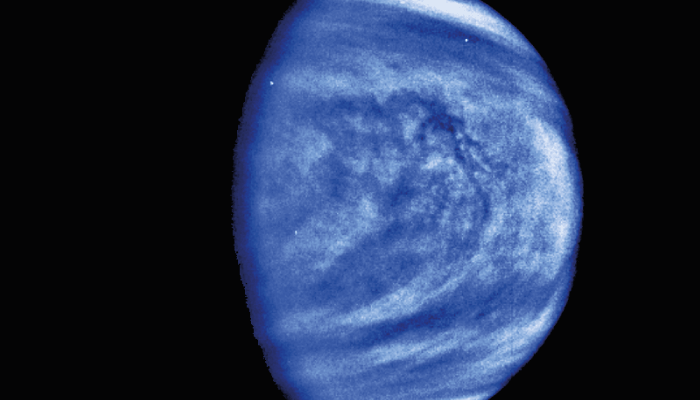
Beneath a thick, caustic atmosphere that is hot enough to melt lead lies the surface of our planetary neighbor. Despite the proximity, very little is known about the composition of Venus, mostly because traditional imaging techniques are blocked by its thick carbon dioxide cloud cover. The only information we have comes from measurements of just a few landing sites. However, a team of researchers from the Planetary Spectroscopy Laboratory at German Aerospace Center Institute of Planetary Research in Berlin have managed to discern the iron content of Venus and produce a geological map of its surface (1).
“Until recently, there were no orbital spectroscopic data for Venus – as are common on other planets – because Venus is covered by thick CO2 clouds,” said M Darby Dyar, lead author of the associated paper, in a recent press release (2). “Visible and near-infrared (VNIR) light cannot penetrate those clouds except in some very small windows in the NIR around a wavelength of 1 micron,” Dyar said.
To overcome this issue, the team measured the emissivity of a range of igneous rocks at high temperatures in the lab, and showed that they matched surface spectra collected by the Venera 9 and 10 Soviet landers in the 1970s. “The new lab data allowed us to develop machine learning algorithms that can measure the iron contents of surface rocks from orbit with high accuracy,” added Dyar. “This is important because key igneous rock types have distinctive iron contents, so we’ll be able to distinguish basalt, andesite, dacite, and rhyolites on the surface. Knowledge of rock types informs our understanding of how the Venus surface evolved.”
There are five of these small windows, where the CO2 clouds are more transparent, and the team hopes their new data and six-spectral band spectrometer design could enable future orbital spectral observations as part of the VERITAS and EnVision missions.
References
- J Helbert et al., Science Advances, 7, eaba9428 (2021). DOI: 10.1126/sciadv.aba9428
- Plantary Science Institute (2021). Available at: https://www.psi.edu/news/venusdyar




